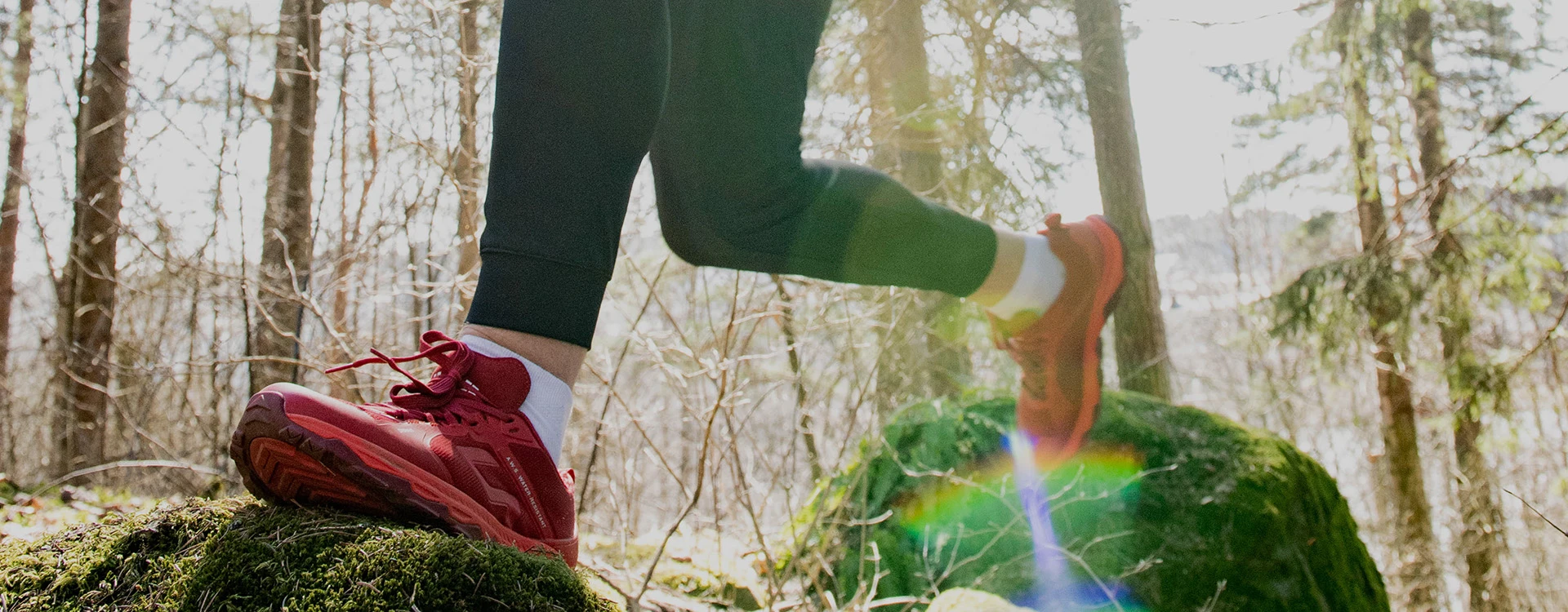











Luhta.com – Nordic house of brands for sports, outdoors and more

WHAT IS TRAIL RUNNING?
If regular jogging doesn't seem to offer enough challenges or you simply want a change of scenery, try finding a new kick for exercising in trail running! Read on to find out what trail running actually means and what you should consider when heading into the forest.
What?
Trail running is, quite simply, running on trails. It differs from cross-country running in that instead of gravel roads and tracks, the running takes place on smaller forest trails. The trail running terrain also includes tree roots, ditches, stones and rocks, which bring challenge and variety to your steps. Like regular running, trail running is an endurance sport, but it develops not only fitness but also agility and balance.
Where?
You can practice trail running on practically any type of trail. Various ready-made forest trails offer the easiest route and a range of running trail maps can also be found online. In addition to the forest, hills and mountains are also great terrains, and there may be trails suitable for trail running in urban environments too. However, when choosing a path, you must consider the possibility of getting lost. The route should be carefully planned, even if you are running in an environment familiar to you. A map is a useful tool for trail runners, but make sure you know how to use it. However, you can and should gradually expand your own trail running territory to new areas.
How?
Trail running differs slightly from regular running in technique, but there are more similarities than differences. In trail running, the step is typically slightly higher to prevent tripping on uneven terrain. The pace is also more moderate than in cross-country running, because you have to be a bit more careful on the trails due to the risk of stumbling, and the altitude differences also make trail running heavier. For more precise information about running posture and technique, you should check e.g., books or guide videos on the topic or perhaps get some advice from a professional.
When?
For example, right now would be a great time for trail running! Spring, summer, and autumn are all great seasons for enjoying nature and the right clothes enable running in any weather. Conversely, winter can challenge runners, especially in the northern regions, with snow covering most trails. However, some winter-maintained routes might be available, so you don't necessarily have to put the activity on hold for the winter. The darkness of evenings and nights may also cause a challenge for trail runners, and it's not a good idea to run in total darkness, as the risk of tripping is high. Alternatively, you can choose lit trails if possible or use a headlamp.